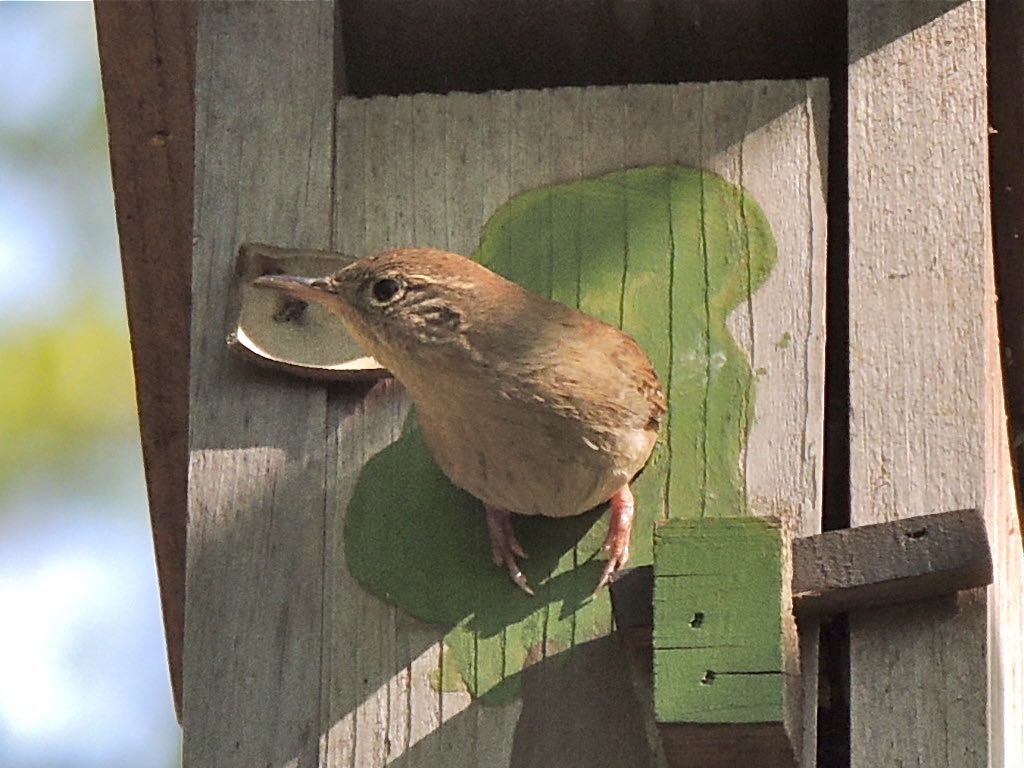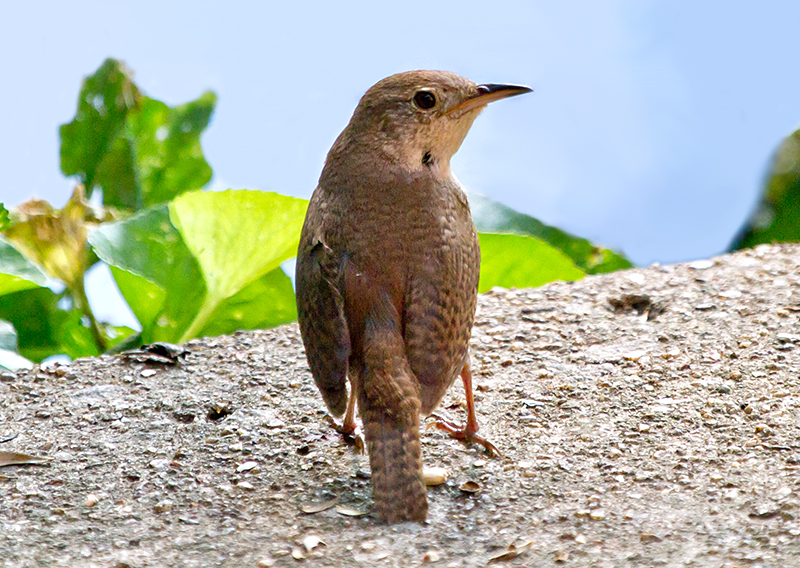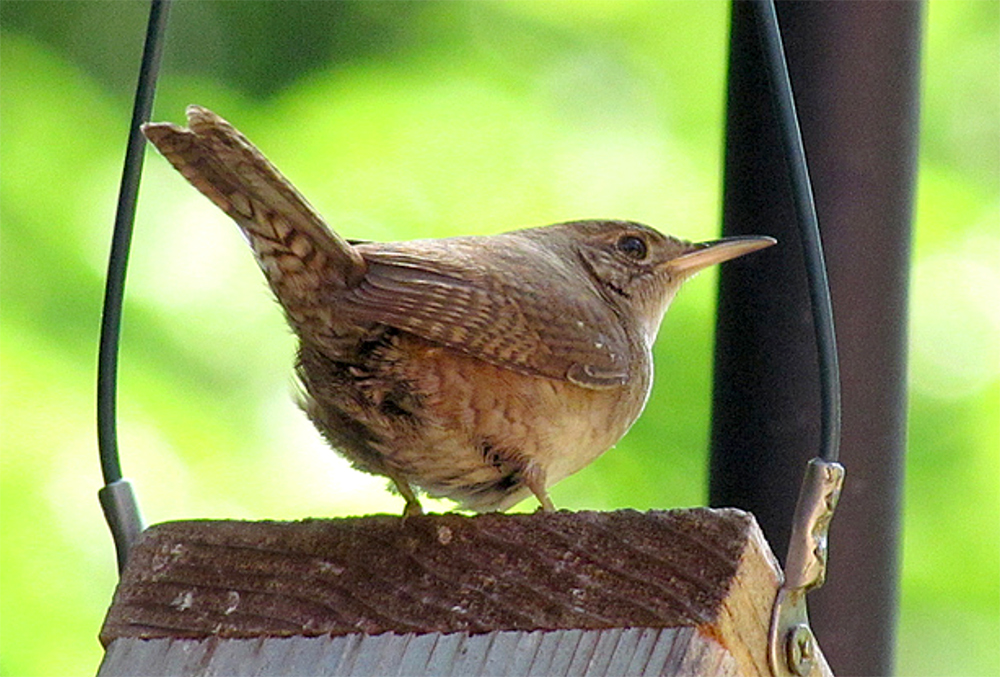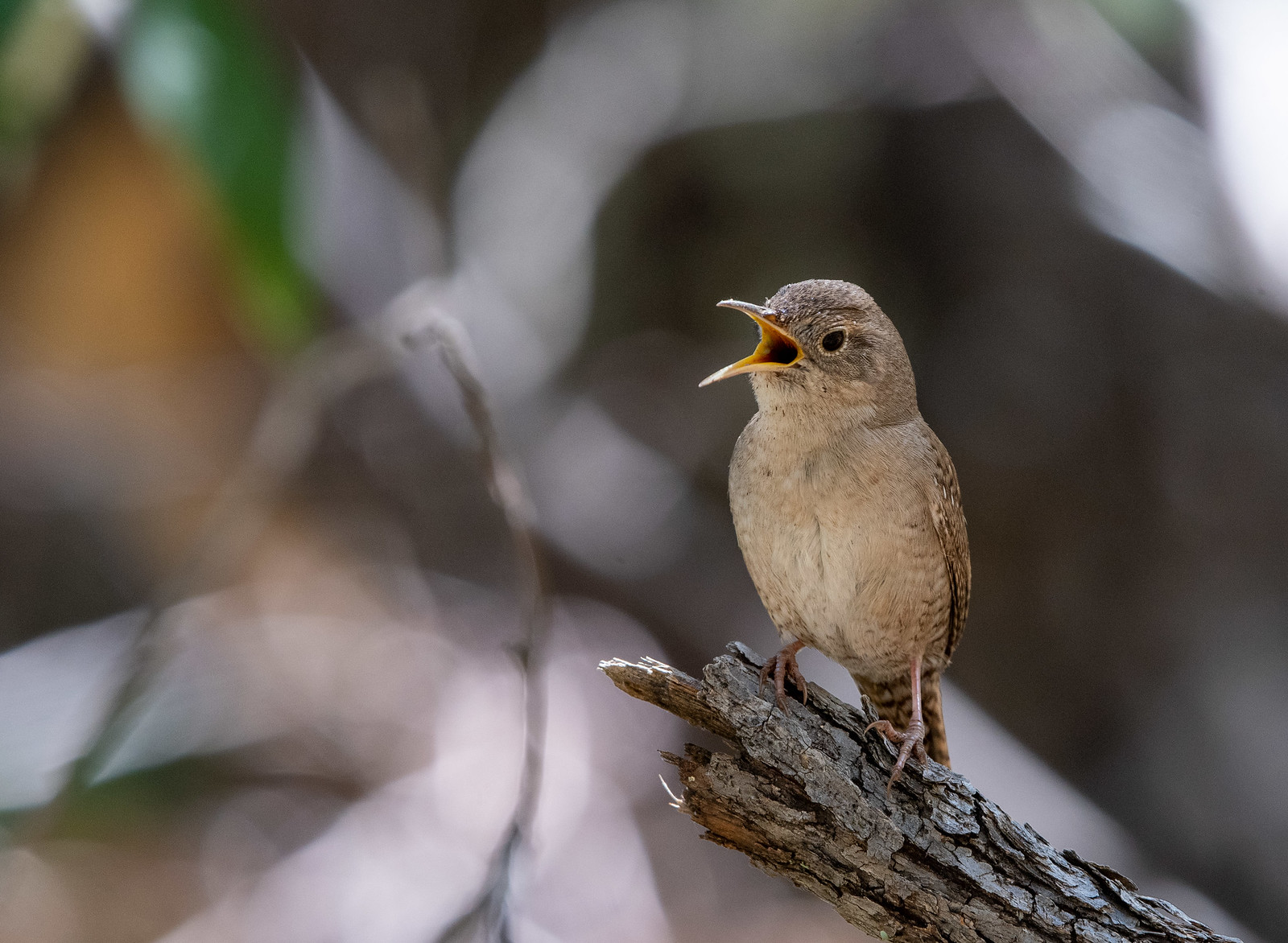| Summer Resident | |
| Has Nested near Park |
House Wrens usually start to arrive at Monticello Park in mid-April. They nest in houses next to the park.
Where to See Them in the Park

Some homeowners living adjacent to the park have put up nest boxes for House Wrens. One homeowner on the ridge side has put up multiple boxes. You can see the wrens if you stand in the park and look into the yards with the boxes. When House Wrens arrive in the spring, they spend about a week squabbling as they try to claim their breeding quarters. Eventually, they all settle down and coexist relatively peacefully so that they can get on with the job of raising their young. House Wrens do not need a specially designed wren box in which to nest. They have been known to build nests in odd places, such as in old boots and in laundry hanging on clotheslines.
Physical Description


House Wrens are smaller than most of the warblers who visit Monticello. They are energetic, often darting around quickly. They have a brown back and are grayish-brown below. The only species they could possibly be mistaken for at Monticello is the smaller Winter Wren, and most of them have left before the House Wrens arrive. The House Wren has a longer tail and frequently keeps it cocked. The sexes look similar, and the adults have the same plumage in the spring and the fall.
Vocalizations

The best way to tell if House Wrens are around is by hearing their song, which is long and bubbly. The wrens sing a lot when they are trying to select or protect a nest box. The call notes have a scolding quality.
Hear the vocalizations of the House Wren.
Notes
House Wrens are widely distributed throughout the New World. They can be found from Canada, down through the United States, the Caribbean, Mexico, Central America, and to the Southern tip of South America. Some populations of House Wrens are now considered subspecies, but they may become separate species when further DNA analysis is performed.
Origin of Names
Common Names: House because they often nest near human habitations, not because humans erect houses for them. Wren from the Anglo-Saxon wraenna, which means wren.
Genus Name: Troglodytes means cave dweller, from their habit of diving into holes for cover.
Species Name: Aedon from their singing ability. Aëdon was a tragic character from Greek mythology who grieved after killing her son by mistake. Zeus turned her into a nightingale to relieve her grief.
House Wren video footage
Return to the Index
